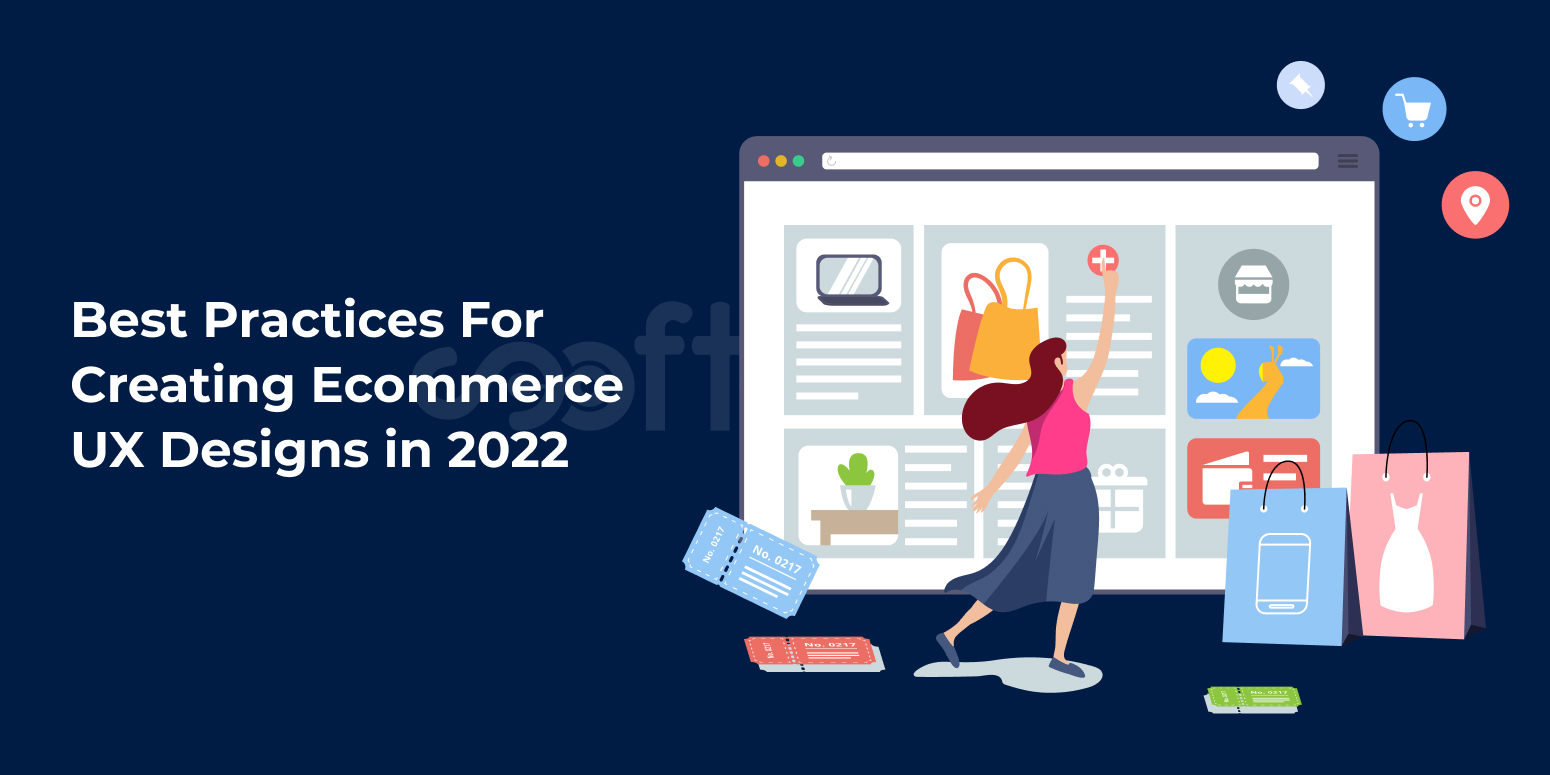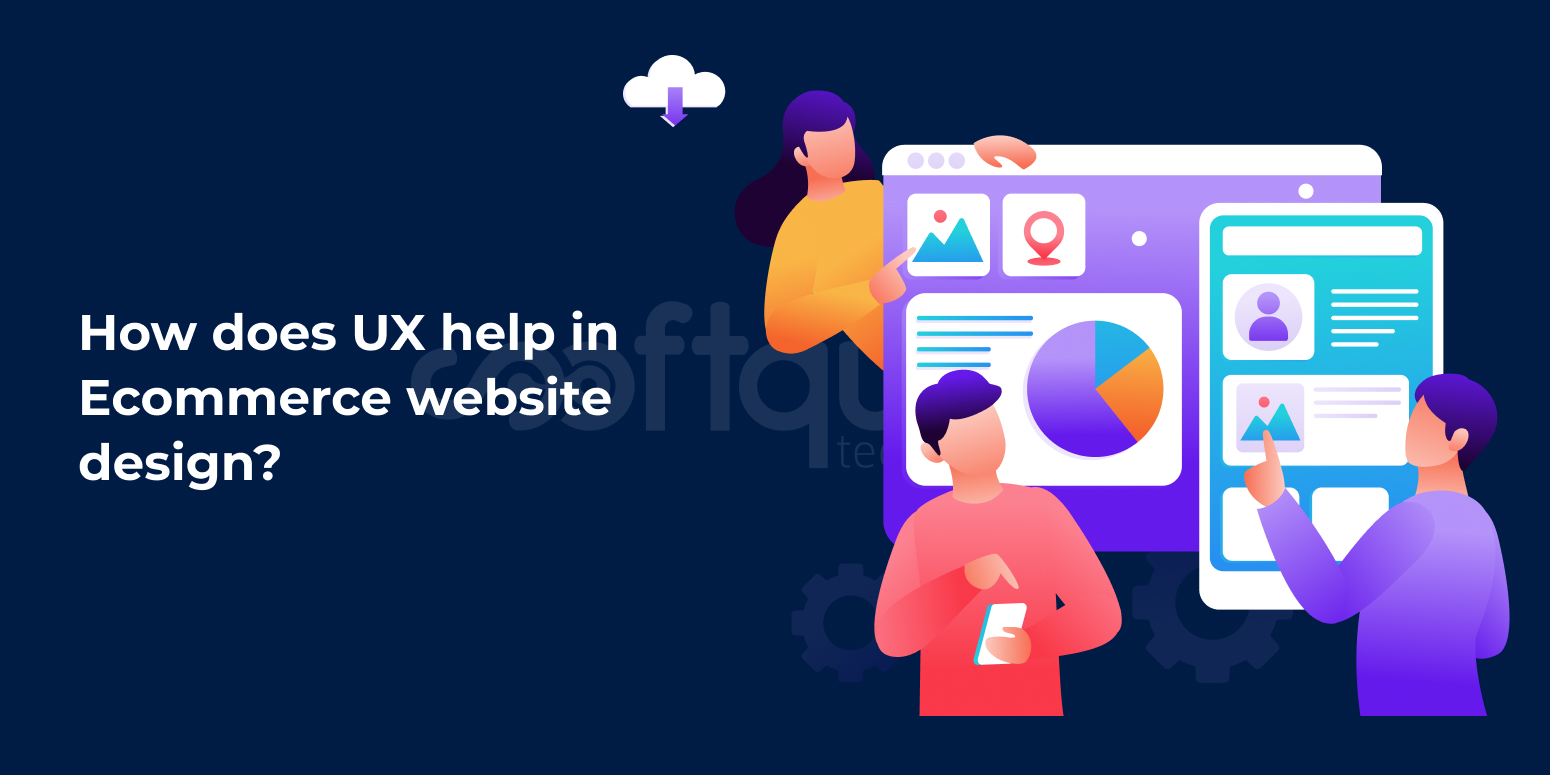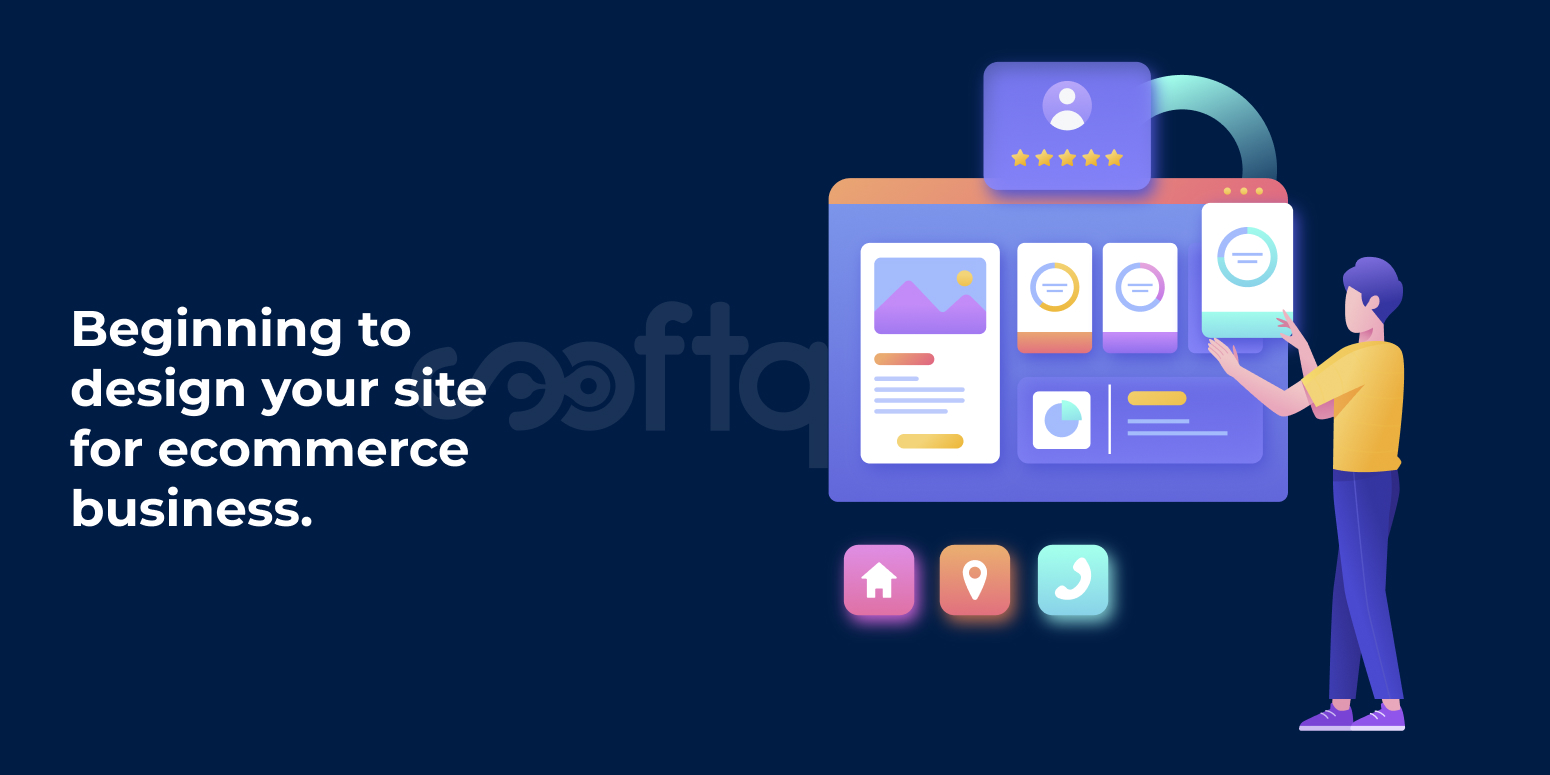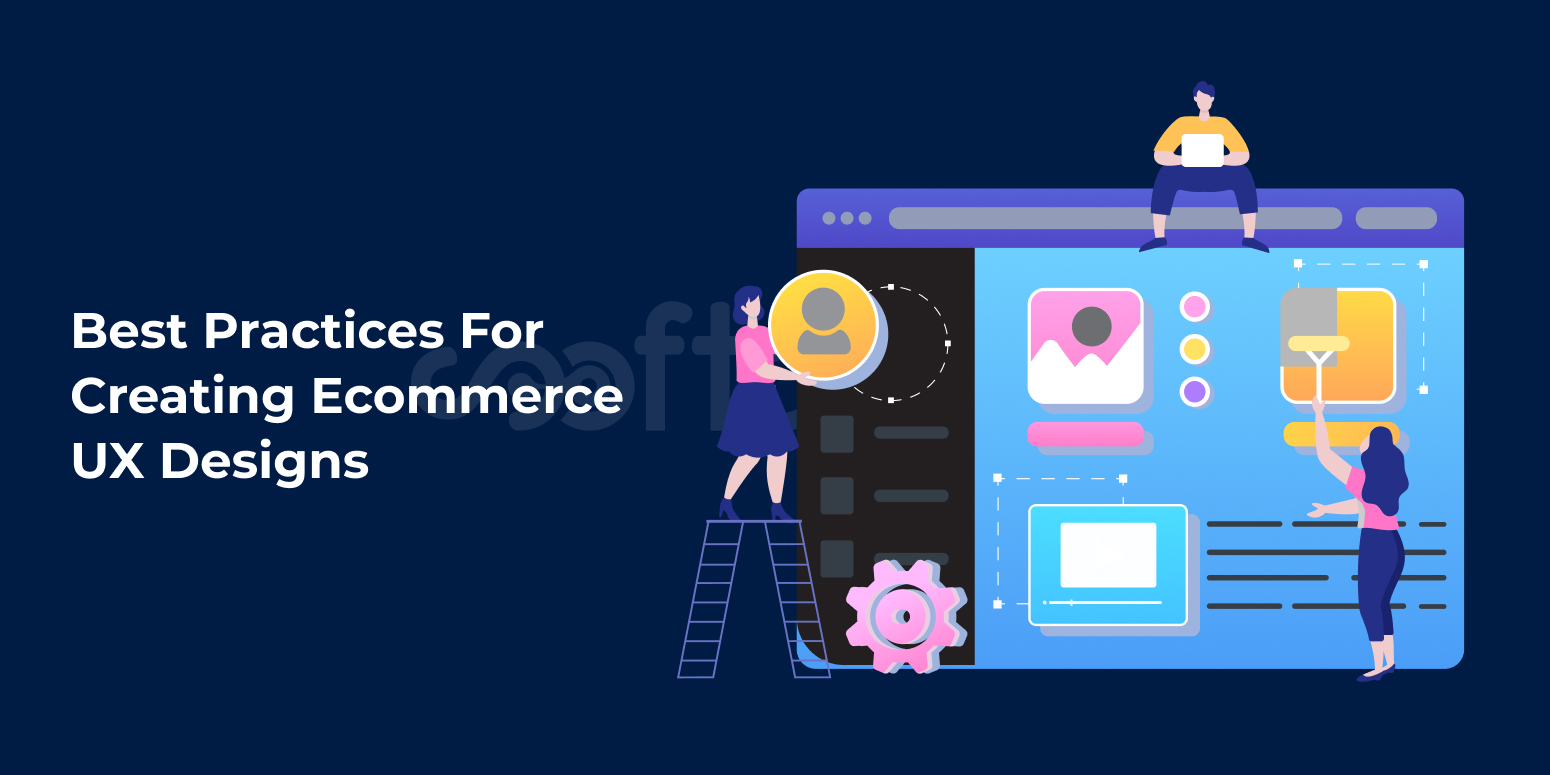Best Practices For Creating Ecommerce UX Designs in 2022
March 21, 2022

Websites have a more significant role in representing your brand globally. And that is why before you go and meet that prospect you wish to, your website does the job. Now the entire decision of the prospective customer to stay at your website is based on the overall experience while using your site to shop online. To convert them from casual browsers to loyal purchasers, you make sure your eCommerce website design has the premium features that are the best compared to your competitors.
So how can your ecommerce website make a difference while designing memorable UX compared to other online stores? Moreover, what will you do about it? And once it is all ready to go, how will you ensure that it meets your target audience’s needs?
Take a read below to know some of the best practices and design tips to create and maintain the most decent and reputed eCommerce website.
What is Ecommerce UX?
Ecommerce websites are not meant to be only informational. It includes an equal amount of transactional data. All this together enables the prospects to find solutions or products they are looking for. An ecommerce website is the most convenient mean to buy products and services that a customer needs.
The final purpose of any ecommerce website is to drive potential customers to do purchases. What do you need to ensure as an entrepreneur to get to this point? One of the most important aspects is to invest in user experience research and design. This would be of great worth. Forrester’s research reveals that for every $1 that is expended on UX, you get $100 in return. Isn’t that amazing? It is the truth. UX offers a complete 9900% ROI.
How does UX help in Ecommerce website design?
UX means User experience. It defines the relationship developed between your online shoppers and your ecommerce website. UX designs are the initial way to approach web content creation, and the designs inform your target audience all that they want to see and buy.

Evaluating your ecommerce web design with a UX lens needs to be done in the below three ways:
- What: What does the user want from this website or web page? What are they hoping to accomplish?
- Why: Why is the user engaging with this page?
- How: How will the page’s features and functions help the user achieve their interaction goal? How will you make the site accessible to the user and appealing?
Beyond the above aspects, the core concepts of UX in ecommerce web design can be considered into five components.
- Visual design: The look and feel of your eCommerce website design. The colors and shapes and the sound and image quality provided.
- Information design: The information about your products and services presented, and conduciveness to customer understanding. The website’s hierarchical structure is transparent so that your customers can find exactly what they need.
- Interaction design: The website should make sense when considered an interactive journey. Your eCommerce web design supports your customers’ goal completion, such as a purchase.
- User needs: What expectations do your customers have when shopping on your website, and does it fulfill them?
- Navigation design: How does your site navigation work, and does it support your customers’ journey from initial contact to the sale?
Beginning to design your site for ecommerce business.
Setting up a webshop for your products and services may seem as easy as eating a pie. But your web designs need to be planned out carefully before you get started.

A few things you should do in advance are:
User Research
User research is critical for developing an eCommerce website design that fulfills your potential customers’ needs rather than what you think they might require. There are several user experience research methods and tools you can use to help you narrow down how your customers want to be able to complete tasks and interact with your website.
Competitor Analysis
Analyzing competitors’ products and services pages will enable you to get insights about your target audience who are looking for online stores. You will not have a competitive advantage if they give you more information or a more precise customer experience. Make sure that it’s easy to compare your web design and theirs and that prospects choose yours because it’s easy to use and your products are superior.
Collaborate with a Team Who Fulfills Your Entire UX Needs
Your team needs to cover all the different aspects of your eCommerce web design: user experience design, copy creation, user interface design, interaction design, and service design. Make sure you have the skills to make an eCommerce site that will help your products fly off the digital shelves.
Best Practices For Creating Ecommerce UX Designs
Have Clear and Concise Vision
According to the Nielsen Norman Group, eCommerce web design must be clear and concise for the best results. If you’re listing your products and services, it’s worth bearing the following in mind:
- Use a descriptive product or service name.
- Provide clear and concise product descriptions.
- Utilize recognizable images from your brand.
- Offer a larger version of your images for accessibility.
- Show your target audience how many products are available in a transparent way.
- Make adding products to your cart simple and obvious.
- Make sure your prices are transparent, and any extra charges are easy to find and understand.
Take a Direct Feedback
The target audience is the best source of motivation and inspiration for creating an improved ecommerce web design. Ask questions and find out who your audience is. This will help guide you in optimizing your design precisely for their needs. And this can be taken as direct feedback.
To obtain specific feedback, all you need is to use customer experience metrics like customer effort scores. Open text response questions to allow you to get the voice of the customer in their own words. You can also use a website satisfaction survey to help gather feedback from users on their specific web experience. Surveys can be delivered via email marketing after a customer has interacted with the site or through chat boxes right on the page so you can get an immediate response to your design.
Also, ensure your request for feedback isn’t intrusive–you don’t want to derail your customer’s journey from landing on your site to the shopping cart.
Collect Indirect Feedback
With a prompt, your customers’ own words will be helpful for website designing. However, you may also use indirect feedback to know your customers’ web experience.
This feedback is gathered from social media channel mentions and interactions, and unsolicited emails sent to your company. These may not be positive, as customers tend to reach out to relay negative feedback.
However, this can also be useful—if your customers are unhappy about aspects of your web design, you can make amendments to improve their opinion. 70% of customers who have a complaint resolved say they will return to purchase from the company again.
This indirect feedback will help you design your eCommerce experience initially and help you improve it as you gather more information continually.
Check Out With Operational Data and Experience Data
Combining operational data and experience data is a powerful tool for your ecommerce web design.
From an operational perspective, scroll depths, click hotspots, bounce rates, site conversion rates, and more can help you see exactly where your customers are having trouble engaging with your site. You can more easily discover where broken experiences lie and fix them for a better customer journey.
You don’t want your customers to halt their purchase process because your credit card payment options aren’t working correctly. For example, you can spot and fix your checkout process if you’re seeing lots of customers leave at this step when analyzing your operational data.
Get an Outside-in Approach
Find a suitable outside approach to design your ecommerce website. Do not put just what you think is the best for your audience on your site. Instead, make an effort to design your site by providing users with exactly what they want. 55% of consumers are happy to pay more for an improved customer experience—meaning it’s worth taking the time to invest in providing an experience they’ll remember.
Previously mentioned, also gather initial ideas from your existing website or customer base. Do your research on what your target audience prefers to buy and choose. Then, as you gather direct and indirect feedback over time, you’ll begin to build a picture of what your customers want to see as they travel through your site and what they want to see when they land on each page.
Manage Your Web Design Regularly
Creating your website is not going to be a one-time activity. Your designs should continuously evolve and improve based on your ongoing feedback for the best online shopping experience.
The Whole Story is About Your Customers!
Ecommerce website designs ultimately deal with and for the customers. Knowing how to make a memorable shopping experience is simply gathering insights from your customers and the available data. Based on the data, you will design the site and adapt to the approach once you learn more about the customers’ buying behavior.
The present world relies on getting meaningful insights quickly and eventually using them to transform experiences at different levels. This is a sure-shot way to success.
One of the essential tools in a designer’s toolbox is feedback. The most effective way to perform the creative process is seeking regular feedback from designing and development teams and gathering their inputs to know your actual progress and improvement. This can be considered one of the most reliable best practices for higher conversions with your UX designing skills.
Hope this article helped you gain better insights for choosing a reliable UX designing company for transforming your excellent idea into a potential reality.
Share on









